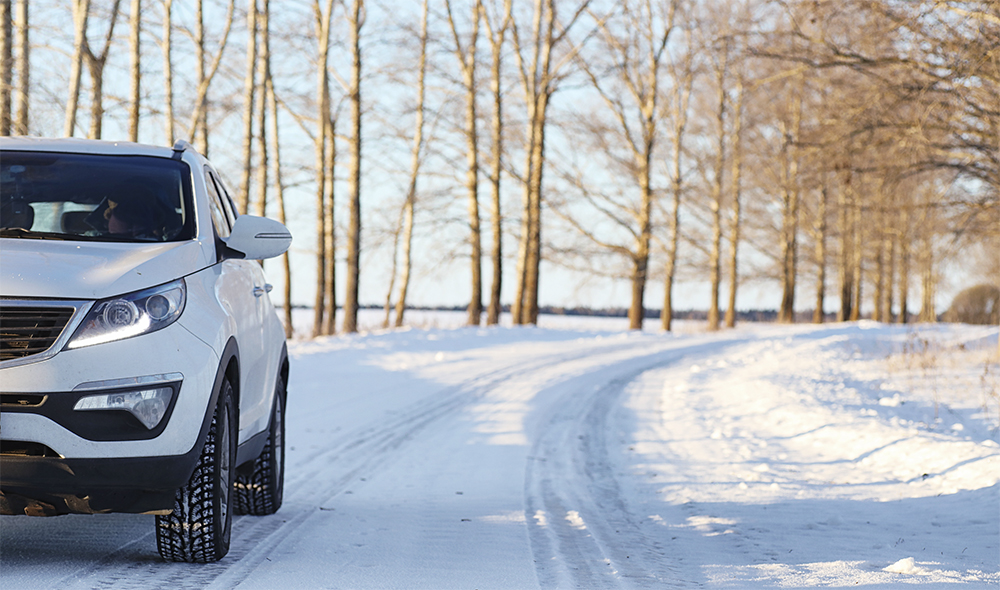Winterizing Your Vehicle: Essential Tips for Cold Weather Driving

As temperatures begin to drop and winter weather sets in, preparing your vehicle for the colder months is crucial. Winterizing your vehicle ensures it runs smoothly and safely, preventing breakdowns or costly repairs. Cold weather can take a toll on everything from your car’s battery to its tires, so taking the necessary steps before the snow falls is key. Here are some essential tips to help winterize your vehicle and stay safe on the road during the colder months.
1. Check and Replace Fluids
Fluids are the lifeblood of your vehicle, and extreme cold can cause some fluids to thicken or freeze, which can damage your engine or reduce efficiency. Here’s a breakdown of important fluids to check:
- Antifreeze/Coolant: Antifreeze is vital to keeping your engine from freezing in cold temperatures. Make sure the antifreeze level is appropriate, and the mixture is around 50% water and 50% antifreeze. This balance helps the coolant flow properly and prevents freezing.
- Oil: Cold weather can cause motor oil to thicken, which makes it harder for your engine to start. If you live in a region with particularly harsh winters, consider switching to a winter-grade oil with a lower viscosity. Check your owner’s manual or consult with a mechanic to find out the best oil for your vehicle in colder conditions.
- Windshield Washer Fluid: Regular windshield washer fluid may freeze when temperatures drop. Make sure to fill your washer reservoir with winter-specific washer fluid that is formulated to resist freezing.
2. Inspect Your Battery
Cold weather can significantly reduce your battery’s power. In fact, at 0°F, a car battery loses about 60% of its strength, while the engine requires more energy to start. Before winter hits, have your battery tested to ensure it holds a full charge. If it’s more than three years old, consider replacing it. Clean any corrosion from battery terminals, as dirty terminals can weaken the connection and impact performance.
3. Examine Your Tires
Tires are critical to ensuring your vehicle has proper traction on icy or snowy roads. Here’s what to check:
- Tread Depth: Adequate tire tread is essential for gripping the road during winter. Use the penny test: insert a penny into your tire’s tread with Lincoln’s head upside down. If you can see all of Lincoln’s head, it’s time to replace your tires.
- Tire Pressure: Cold weather causes the air inside your tires to contract, which lowers tire pressure. Underinflated tires reduce fuel efficiency and make it harder to handle your vehicle on slick surfaces. Check your tire pressure regularly throughout the winter, and keep them inflated to the manufacturer’s recommended levels.
- Winter Tires: If you live in an area with heavy snowfall or frequent icy conditions, consider installing winter tires. They’re designed with deeper tread patterns and rubber compounds that remain flexible in cold temperatures, providing better grip on snow and ice.
4. Check Your Brakes
Your vehicle’s braking system is particularly important in winter, when roads are often slippery. Listen for any squealing or grinding noises that could indicate worn brake pads. If your brakes feel soft or slow to respond, have them inspected by a professional. Ensuring your brakes are in top shape will give you the stopping power you need on icy roads.
5. Keep Your Windshield Clear
Good visibility is crucial for winter driving. Inspect your windshield wipers to ensure they’re in good condition and can handle snow, ice, and sleet. If they leave streaks or don’t fully clear the windshield, replace them with winter wipers designed to handle harsher conditions. Also, carry a scraper and a de-icer to remove ice buildup from your windshield and windows before driving.
6. Test Your Heating System and Defroster
Your vehicle’s heating system and defroster are essential for both comfort and safety. Make sure they’re working properly to keep the interior warm and your windows clear. If your heater or defroster isn’t functioning as it should, have it checked by a mechanic before winter arrives.
7. Create a Winter Emergency Kit
In case of a breakdown or an emergency, it’s important to have a well-stocked winter emergency kit in your vehicle. Your kit should include:
- A blanket or extra warm clothing
- Flashlight and extra batteries
- Jumper cables
- Non-perishable snacks and water
- First aid kit
- Ice scraper and snow brush
- Road flares or reflective triangles
- A small shovel and sand or kitty litter for traction
These items can keep you safe and comfortable while waiting for help, should you become stranded in winter weather.
Conclusion
In conclusion, winterizing your vehicle is essential for ensuring that it runs efficiently and safely during the colder months. By checking your fluids, inspecting your tires and battery, and preparing an emergency kit, you can reduce the risk of winter-related breakdowns and accidents. Regular maintenance and preparation not only protect your vehicle but also help you drive confidently through snow, ice, and freezing temperatures. Taking these steps before winter hits will ensure that you and your car are ready for whatever the season brings.
For more information, check out Friendly Automotive, your expert Tucson Auto Repair Center and Scheduled Auto Maintenance Shops in Tucson, and Follow us on Facebook and X.
